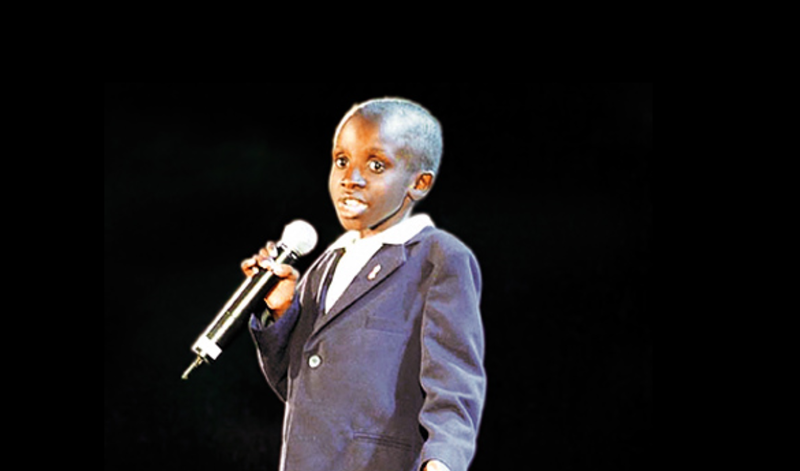Becoming SA’s longest-surviving child born with HIV, here’s how Nkosi Johnson changed the world
by Mildred Europa Taylor“Care for us and accept us, we are all human beings. We are normal. We have hands. We have feet. We can walk, we can talk, we have needs just like everyone else. Don’t be afraid of us – we are all the same.”
Those were the words of Nkosi Johnson at the opening event of the International Aids conference in 2000 when he was just 11.
The South African child activist was a key-note speaker at the event, campaigning for the equal rights of children with AIDS.
The following year, he sadly passed away, becoming South Africa’s longest-surviving child born with HIV.

Today, he is remembered as the young boy who helped changed not only his country but the world. And here’s how.
Born Xolani Nkosi with HIV on February 4, 1989, in Johannesburg, South Africa, Nkosi was soon adopted by Gail Johnson, a public relations officer from an AIDS care center as his mother was also HIV positive and was too ill to take care of him.
Together with his adopted parents, Nkosi began the fight against the deadly virus. But what brought him into the limelight was when a local primary school refused to take him as a pupil because he was HIV-positive in 1997.
In response, Nkosi, alongside his adopted mother, started organizing workshops to properly educate the South African community about AIDS.
Their efforts greatly changed South Africa, as it was forced to make some policy changes. Reports said parliament passed legislation that banned schools from turning away children based on their health.
Due to these anti-discrimination policies, Nkosi was accepted into the school that hitherto rejected him. That was the same period he lost his mother.
“She went on holiday to Newcastle – she died in her sleep,” Nkosi said in 2000.
“And mommy Gail got a phone call and I answered and my aunty said, please can I speak to Gail? Mommy Gail told me almost immediately my mommy had died and I burst into tears.”
While at school, Nkosi began campaigning for other children with AIDS and his foster mother helped him to establish Nkosi’s Haven, a non-governmental organization still active today that treats and supports families affected by AIDS.

Speaking publicly about what it was like to be a child with AIDS, Nkosi caught the attention of the world and was soon getting invitations to several high-profile events, including being the keynote speaker at the International Aids Conference in 2000.
There, his touching speech was televised worldwide to 10 000 delegates.
“Hi, my name is Nkosi Johnson,” he began. “I am 11 years old and I have full-blown Aids. I was born HIV-positive.”
His self-written address centered on compassion and improved medical treatment for people with AIDS, especially children and pregnant women.
In October 2000, he highlighted the same message at an Aids conference in Atlanta, Georgia.
“It is sad to see so many sick people,” he said. “I wish everybody in the world could be well.”
Despite numerous efforts to control the spread of HIV/AIDS, it remains a major public health concern and the main cause of death in many parts of Africa.
Sub-Saharan Africa alone accounts for 69 percent of all people living with HIV globally. In 2011, the region accounted for 70 percent of deaths caused by AIDS.
In South Africa, about 7.2 million people are living with HIV, making it the country with the biggest HIV epidemic in the world. In recent years, the country has been making huge improvements in getting people to test for HIV.

Children like Nkosi could have done more in this regard if the virus had not destroyed his body and caused his death at the age of 12.
To honour his efforts, the International Children’s Peace Prize was created, four years after his death. The award, known as a “Nkosi” statuette, is given to someone who has promoted children’s rights.
This month, Google paid tribute to the child campaigner on the anniversary of his birth – February 4, 1989 – with a doodle by artist Kevin Laughlin.
Nkosi is gone but his memory lives on. Johnson believes that the young boy has “given Aids a face and allowed people who are still afraid of being associated with Aids to grieve openly.”
“Most importantly perhaps, his fight and his bravery have given hope to many, many people.”